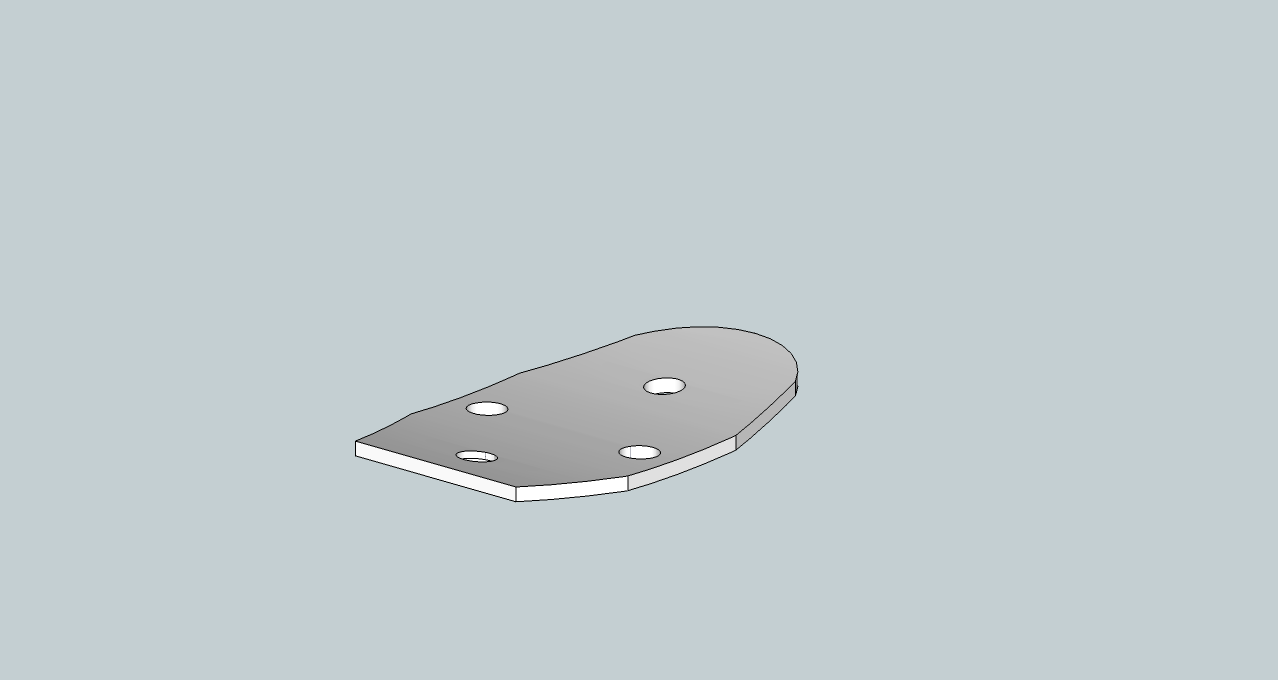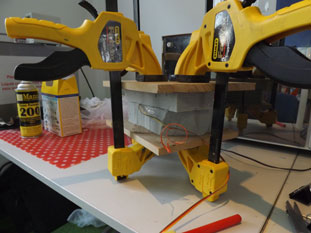Week 11: Composites
This week I wanted to build on the cycling shoe force sensor I developed in the Input Devices week and make a force sensing plate compatible with the bottom of my cycling shoe.

My first step was to measure and produce a drawing of the existing plate on the bottom of my shoe used to attach the pedal cleat. I measured the plate and drew it in SketchUp. One challenge I overcame was to create a curved flat plate in SketchUp. I located and used a Ruby plugin from Chris Fullmer called Shape Bender which allows a flat object to be projected on to a curve.

Once the part was designed I designed a two part mould. The mould was milled on the ShopBot in foam. I was uncertain whether the foam moulds would release the composite parts easily, so I decided to make silicon negatives of the moulds so that they could be re-created at a later date in casting stone if needed.

I developed linen fibre inserts from the SketchUp design, with a different version with a cut out for the capacitive force sensor. I cut out the linen on the 40W Epilog laser cutter with settings 80/100/400. The force sensor was made from a piece of elastomer foam with copper vinyl pieces attached to both sides and sensor wires were soldered on after threading sufficient linen pieces to match the thickness of the foam.


I coated the foam moulds with release agent. I selected Smooth On 305 urethane liquid plastic for the matrix material. It wetted the linen well and covered the surface of the mould well. When the mould halves were filled, they were sandwiched between two wooden boards and clamped. The casting set in 30 minutes.


It was not possible to extract the casting from the mould without destroying it. The cast plate is rigid at the edges and flexible in the centre, where the pressure pad is located. The copper pads and signal wires are visible through the composite structure. I attached the sensor to the step response measuring circuit I built previously and established it is possible to detect a force on the plate and display it using the python script.


Next steps will be to review the design so it better fits the recess on my shoe. At the moment it is not fully seated under the cleat and is therefore not compressed when the cleat has force put through it. Also the sensor wire needs to be routed to the bottom surface of the pad as it could be damaged by the recess when the cleat is attached.